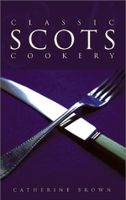Label
All
0
Clear all filters
🔥 Try our grilling cookbooks and save 25% on ckbk membership with code BBQ25 🔥
Swede Turnip
Appears in
Published 2003
‘Our club [The Cleikum] put a little powdered gineger [sic] to their mashed turnips, which were studiously chosen of the yellow, sweet, juicy sort, for which Scotland is celebrated…’ says Meg Dods in The Cook and Housewives Manual (1826).
This yellow variety that she refers to is the same variety that accompanies haggis and mixes so well with Orkney Clapshot. It is a variety of Brassica Campestris, which is known as a Swedish turnip, swede or Rutabaga – Brassica Napus. It came from Sweden to Scotland in the late eighteenth century and is known in England as a swede. Brassica Rapa, the white-fleshed cultivated turnip, is the plant from which many other turnips, oil seed rape and many varieties of Chinese cabbage, have been developed. Brassica Rapa is related to the ordinary cabbage and was originally crossed with it to form the swede. It is likely that swedes first appeared in medieval gardens where turnips and varieties of cabbage were growing together.
Become a Premium Member to access this page
Unlimited, ad-free access to hundreds of the world’s best cookbooks
Over 160,000 recipes with thousands more added every month
Recommended by leading chefs and food writers
Powerful search filters to match your tastes
Create collections and add reviews or private notes to any recipe
Swipe to browse each cookbook from cover-to-cover
Manage your subscription via the My Membership page
Best value
Part of
Advertisement
Related Recipes
-
-
-
-
Related Reference
-
-
-
-
Advertisement
The licensor does not allow printing of this title



